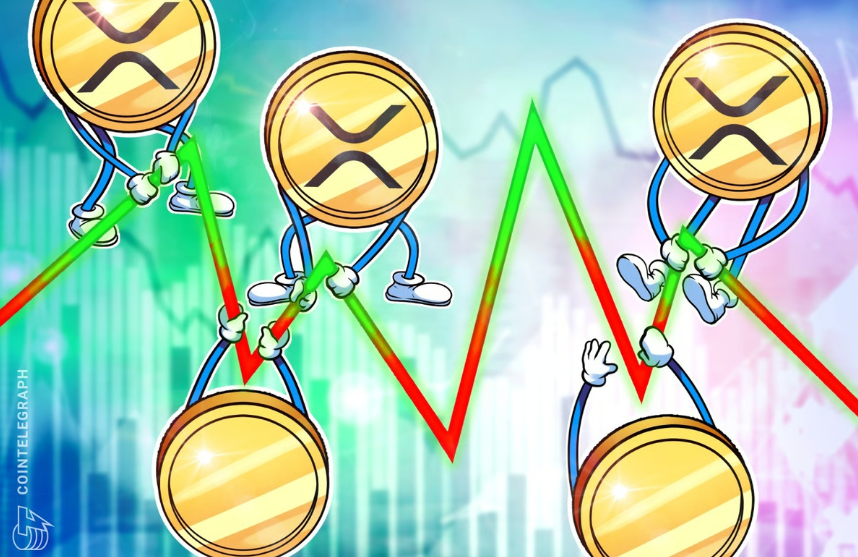
XRP Price Volatility: How to Navigate the Ups and Downs
Cryptocurrencies have become one of the most intriguing and unpredictable markets in recent years, and XRP (Ripple) is no exception. As one of the most traded digital currencies, XRP’s price experiences significant fluctuations, leading many traders and investors to grapple with how to effectively manage these volatile movements. Understanding how to navigate the ups and downs of XRP’s price can be key to making well-informed investment decisions. In this article, we’ll explore the factors that influence XRP price volatility and offer strategies to help you manage it.
What Is XRP and Why Does Its Price Experience Volatility?
XRP is the native cryptocurrency of the Ripple network, a decentralized platform that facilitates fast and low-cost cross-border payments. XRP’s main selling point is its ability to process transactions quickly, making it a popular choice for financial institutions and payment service providers.
However, like most cryptocurrencies, XRP’s price is subject to high volatility. Unlike traditional assets like stocks or bonds, cryptocurrencies can experience wild price swings due to factors such as market sentiment, regulatory news, technological developments, and the influence of major players in the market.
One of the key reasons for XRP’s price volatility is its relatively small market capitalization compared to more established cryptocurrencies like Bitcoin and Ethereum. This means that even small trades or market movements can cause significant price fluctuations. Additionally, XRP is highly sensitive to news events—such as legal developments or government regulations—further driving its unpredictable price behavior.
Factors Affecting XRP Price Volatility
- Market Sentiment
Market sentiment plays a critical role in the price of XRP. Positive news about XRP’s adoption or partnerships with major financial institutions can push its price upward, while negative news, such as regulatory challenges or market-wide crashes, can cause XRP’s price to drop sharply. - Regulatory Concerns
XRP’s price is highly sensitive to regulatory actions, particularly those coming from governments or financial regulators. A notable example is the ongoing legal battle between Ripple Labs and the U.S. Securities and Exchange Commission (SEC). The outcome of this case, as well as similar regulatory actions in other countries, can significantly impact the price of XRP. - Liquidity and Market Size
The liquidity of XRP in the market also affects its price volatility. While XRP is widely traded on major exchanges, it does not have the same liquidity as Bitcoin or Ethereum. As a result, large buy or sell orders can cause significant price fluctuations, particularly in a thin market. - Technological Developments
Any updates or advancements in the Ripple network can affect XRP’s price. Improvements to the Ripple protocol that enhance its scalability, speed, or security can attract more users, driving up the demand for XRP. Conversely, any issues with the network could cause concerns, leading to a decline in XRP’s price. - Whale Activity
“Whales” are individuals or entities that hold a significant portion of XRP in their wallets. Their buying or selling activities can cause large-scale fluctuations in XRP’s price. When a whale moves a large amount of XRP, it often triggers a chain reaction in the market, either pushing the price higher or lower.
How to Navigate XRP Price Volatility
Managing the ups and downs of XRP’s price can be challenging, but there are strategies you can employ to reduce risk and maximize potential gains.
- Diversify Your Portfolio
Diversification is a key principle of risk management in any investment. By holding a mix of cryptocurrencies and traditional assets, you can help cushion the impact of XRP price volatility. If XRP experiences a significant downturn, other assets in your portfolio may perform better, helping to balance your overall returns. - Use Technical Analysis
Technical analysis is a method of analyzing market trends using historical price data, trading volumes, and other indicators. By studying patterns and identifying support and resistance levels, you can make more informed decisions about when to buy or sell XRP. Tools like moving averages, Relative Strength Index (RSI), and Bollinger Bands can help you understand market conditions and anticipate price movements. - Set Stop-Loss Orders
Stop-loss orders are a valuable tool for managing risk during periods of high volatility. A stop-loss order automatically triggers a sale of your XRP holdings when the price drops below a certain threshold. This can help you minimize potential losses during a market downturn. - Follow News and Market Trends
Since XRP’s price can be heavily influenced by news and events, it’s crucial to stay updated on developments that could affect the cryptocurrency market. Pay attention to regulatory updates, technological advancements, and news about partnerships or adoption of the Ripple network. By staying informed, you can better anticipate price changes and adjust your strategy accordingly. - Consider Long-Term Holding
If you believe in the long-term potential of XRP and are willing to withstand short-term volatility, long-term holding could be a viable strategy. By focusing on the long-term value of XRP rather than short-term price fluctuations, you can avoid getting caught up in the emotional highs and lows of the market. However, this strategy requires patience and a belief in XRP’s future growth. - Avoid Emotional Trading
One of the most important aspects of navigating XRP’s price volatility is controlling your emotions. Cryptocurrency markets can be highly emotional, and fear or greed can lead to impulsive decisions. It’s essential to maintain a clear strategy and avoid making decisions based on short-term price movements.
Final Thoughts
XRP’s price volatility can be daunting, but with the right strategies in place, you can navigate the ups and downs of the market. Whether you choose to diversify your portfolio, use technical analysis, set stop-loss orders, or simply hold for the long term, the key to managing XRP’s price volatility is staying informed and disciplined. By understanding the factors that influence XRP’s price and employing effective risk management techniques, you can position yourself to take advantage of opportunities in this dynamic and rapidly evolving market.
